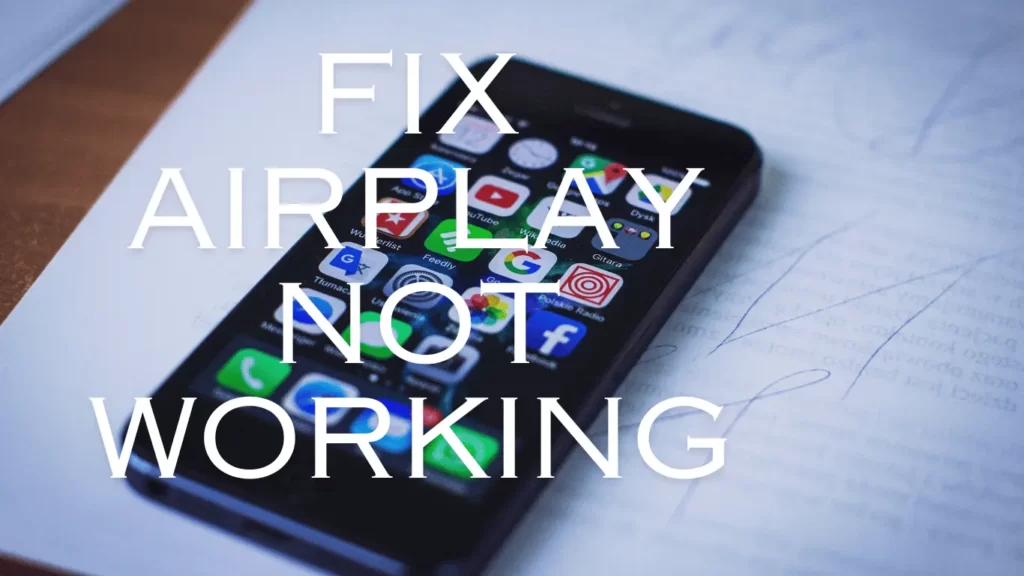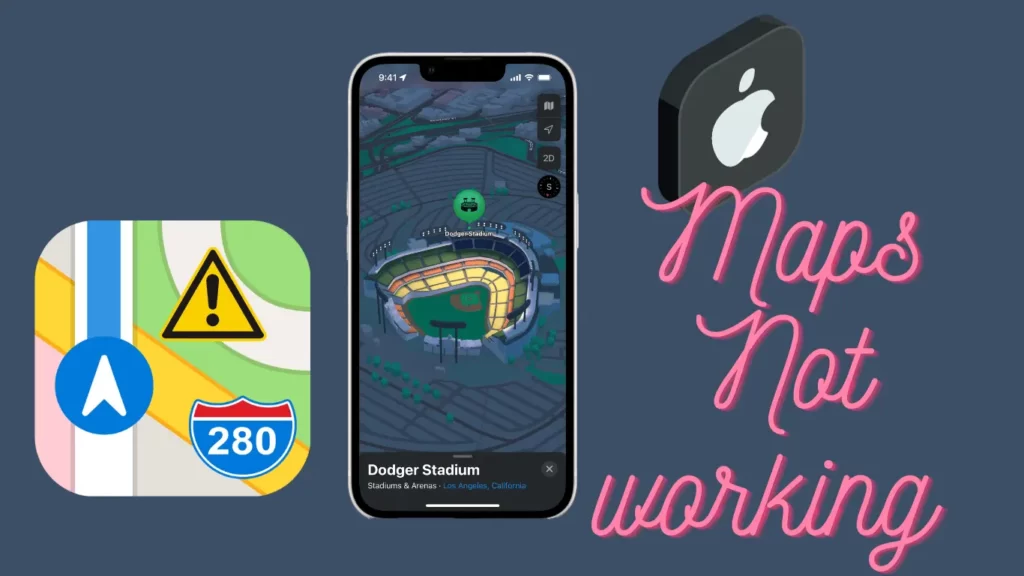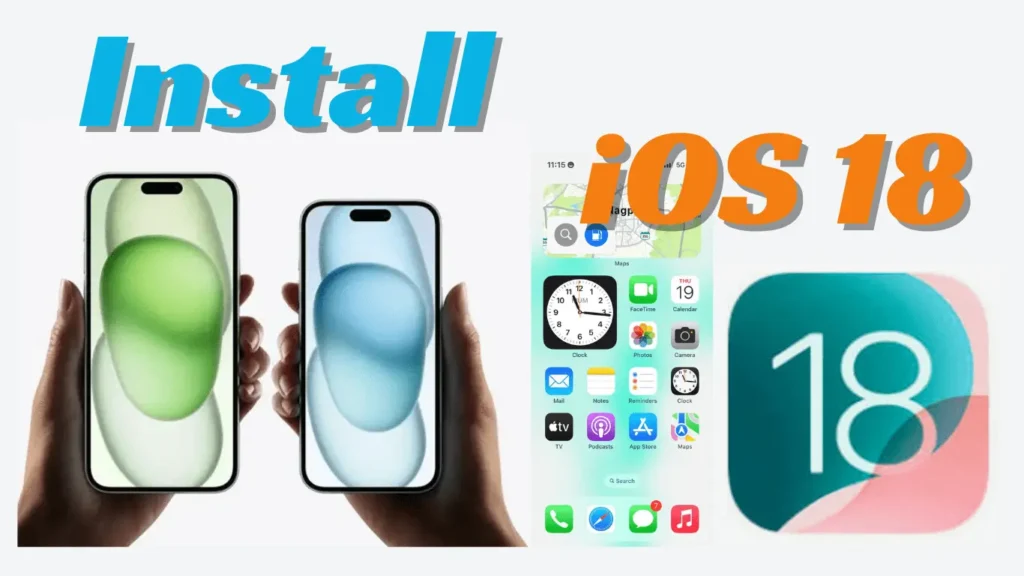
Are you also struggling with issues with Apple AirPlay not working? While this convenient feature is usually seamless, some bugs may need to be fixed. If you’re facing challenges streaming audio or video content, it could stem from an unstable internet connection or miscommunication between your Apple device and the intended destination.
In this article, we’ll discuss the AirPlay not working issue. Here, you’ll get the following tips to troubleshoot and restore AirPlay functionality on your device. So let’s get started…
Table of Contents
What Are The Methods To Fix The AirPlay Not Working Issue?
Method 1: Configuring AirPlay Receiver Settings On macOS.
If you have a modern Mac running macOS Monterey or a later version, it can serve as an AirPlay receiver. This lets you stream content from another device to your Mac and share your Mac’s Screen via AirPlay, provided you have the AirPlay Receiver setting turned on.
For privacy reasons, only devices using the same Apple ID as your computer can AirPlay to your Mac by default. To change this, navigate to System Settings > General > AirDrop & HandOff and enable the AirPlay Receiver setting.
To allow any nearby devices to AirPlay to your Mac, select “Everyone” from the “Allow AirPlay for” menu and click the “Allow Everyone” button.
If you want new devices to AirPlay to your Mac without password verification, you can disable the “Require password” option.
While Apple recommends using an iPhone 7 or later and a 2018 Mac for the best experience, AirPlay is still possible on older devices, albeit at a lower video resolution. For instance, you can AirPlay from an iPhone 6s, even if it’s not officially on Apple’s compatibility list.
Method 2: Make Sure About The Minimum Requirements.
Ensure your AirPlay setup functions smoothly by verifying the compatibility of your AirPlay sender device with the following minimum requirements:
For AirPlay Audio:
iPhone, iPad, or iPod touch running iOS 11.4 or later
Apple TV HD or Apple TV 4K running tvOS 11.4 or later
HomePod or HomePod mini running iOS 11.4 or later
Mac with iTunes 12.8 or later or macOS Catalina 10.15 or later
Windows PC with iTunes 12.8 or later
Read Also: Firestick Not Working: The 8 Simple Methods To Troubleshoot This Problem
For AirPlay video:
iPhone, iPad, or iPod touch running iOS 12.3 or later Mac running macOS Mojave 10.14.5 or later.
Additionally, confirm that the AirPlay receiver device supports the feature by checking for an AirPlay-enabled label on the packaging.
Method 3: Adjusting Firewall Settings on macOS.
If you’re experiencing AirPlay issues specifically on your Mac, it’s possible that your firewall settings are blocking the AirPlay connection. Fortunately, you can easily modify the firewall options on macOS.
Navigate to System Preferences > Network and select the Firewall tab. Then, click on Options beneath the Firewall toggle if it’s activated.
Disable the “Block all incoming connections” option at the top, and enable the setting that says “Automatically allow downloaded signed software to receive incoming connections.” Finally, click OK to save the changes.
Method 4: Activate The Screen Mirroring.
To activate Screen Mirroring on your Mac, the AirPlay receiver will appear in the menu bar under the Screen Mirroring icon when detected on the network.
If the icon is not visible, navigate to System Settings > Control Center, choose the menu beside Screen Mirroring, and opt for “Always Show in the Menu Bar.”
This allows convenient access to initiate or cease AirPlay, mirror your Mac’s Screen, or utilize a nearby iPad as a secondary display directly from the menu bar.
Read Also: Changing The WhatsApp Number: How To Change Whatsapp Number
Method 5: Turn Off The Automatic AirPlay To TVs.
To prevent your iPhone or iPad from automatically AirPlaying content to your Apple TV or compatible smart TV, follow these steps:
Step 1: Open Settings on your device.
Step 2: Navigate to General > AirPlay & Handoff.
Step 3: Select “Automatically AirPlay” and set it to “Never.”
By doing this, you’ll avoid your iPhone connecting automatically to nearby AirPlay receivers, such as your Apple TV, whenever you intend to cast something from your Mac.
Method 6: Check That Your Airplane Mode Is Off.
Ensure that Airplane Mode is disabled on your iPhone or iPad, as enabling it turns off all wireless functions except Bluetooth. Since AirPlay relies on both Wi-Fi and Bluetooth, you must deactivate Airplane Mode.
Access the Control Center by swiping down from the top-right corner, toggle the airplane icon, or go to Settings > Airplane Mode to manage this feature.
Method 7: Turn On Your Bluetooth.
You have two options to activate Bluetooth on your iPhone or iPad running iOS 17.
You can swipe down from the top-right corner to access the Control Center and toggle on Bluetooth, or navigate to Settings > Bluetooth and use the toggle switch to enable the feature.
It is important to ensure that Bluetooth is enabled on both devices for successful communication.
Read Also: Comprehensive Guide On How To Block Websites Across All Platforms
Method 8: Ensure All Your AirPlay Devices Are Running The Latest Software Versions.
Follow these steps for updating your device:
Step 1. iPhone and iPad: Navigate to Settings > General > Software Update.
Step 2. Mac: Go to System Settings > General > Software Update.
Step 3. Apple TV: Access Settings > System > Software Updates > Update Software.
Step 4. HomePod: Click More (…) > Home Settings > Software Update in the Home app.
Method 9: Utilize The Same Wi-Fi Network.
AirPlay’s peer-to-peer feature enables devices to connect even without being on the same Wi-Fi network.
If you’re experiencing issues with peer-to-peer discovery, ensure that both devices are connected to the same Wi-Fi network.
On iOS or iPadOS, check your network in Settings > Wi-Fi, while on macOS, view it by clicking the Wi-Fi icon or going to System Settings > Wi-Fi. For Apple TV users, find the current network in Settings > Network.
If using an Ethernet connection on Apple TV, connect it to the same router as your home’s Wi-Fi. If you encounter Wi-Fi connection problems on a Mac, explore our tips for assistance.
Read Also: The 10 Best Games For Chromebook In 2023
Method 10: You Can Resolve This Issue By Restarting Your Devices.
One way to address the issue is by restarting the devices involved in AirPlay.
For iOS and iPadOS, go to Settings > General > Shut Down. On tvOS, navigate to Settings > System > Restart. To restart your Mac, click the Apple menu and select Restart.
Conclusion
Dealing with AirPlay not working issues can be frustrating, but implementing the suggested tips will likely resolve any glitches. If the problem persists, reaching out to Apple Support is advisable.
AirPlay isn’t the sole way to link your iPhone or iPad to a smart TV. Explore alternative ways to cast content when AirPlay encounters difficulties. This post tells you some of the best methods to solve the Airplay not working issue.






